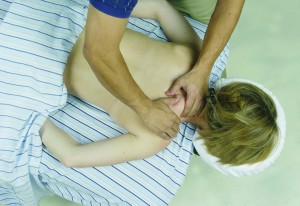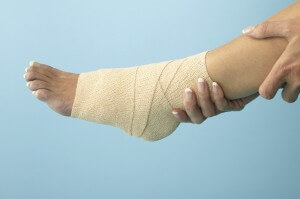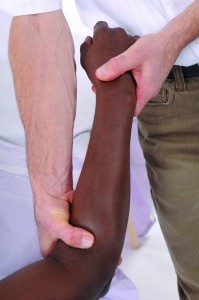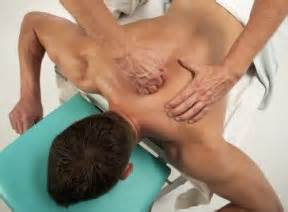Orthopedic or Medical Massage is massage therapy with the intent of improving health and assisting with healing and rehabilitation. Massage therapy began as a health care method consisting of remedial exercise and continues today as an integral part of complementary and integrative medicine. The field of medical massage is constantly changing and growing as we learn more about how the body works and how it responds to physical stimulus. There has been enormous growth in the fields of pain, pain science, neurology and human potential for medical massage therapists to draw from. With massage therapy currently enjoying a renaissance, therapists and researchers are improving on our knowledge and technique everyday.
Massage therapy is naturally circulatory in nature. Even the most general massage helps to promote circulation of blood and lymph in the body. Medical massage uses this property and applies techniques designed to facilitate circulation in specific ways in order to accomplish various goals. Medical massage can be used to increase circulation of blood to a specific area helping it to heal. Lymphatic techniques can be used to reduce the swelling associated with postoperative inflammation. Lymphatic drainage techniques are also commonly used to reduce Lymphedema due to cancer treatments and other lymphatic system issues.

Medical Massage includes techniques like:
- Neuromuscular Therapy
- Lymphatic Drainage
- Myofascial Release
- Facilitated Stretching
- Triggerpoint Therapy
Much of the rest of what Medical Massage can do is accomplished by stimulating the nervous system in one way or another or by freeing entrapped or compressed nerves. Called by many different names and brands, Neuromuscular Therapies use our understanding of how the nervous system reacts to various stimuli. Embedded in all of our tissues and running throughout the body are nervous receptors. These receptors provide a variety of information to our brain and spinal cord. Our central nervous system takes all of this information in and makes decisions about movement and position. By giving these receptors or sensors new information we can change the signals and even how the body reacts to the signals.
Often nerves and nerve bundles get compressed, entrapped or pinched by the surrounding bones, muscle or other soft tissues of the body. Medical massage therapy works to free the nerves from these impingements. By relieving compression and freeing entrapped nerves, medical massage can bring relief to sufferers of nerve impingement and compression syndromes. Issues like sciatica and carpal tunnel syndrome, even spinal nerve compression due to injury or degeneration of inter-vertebral discs, vertebra and the surrounding tissues can often be addressed with medical massage there by avoiding more expensive and invasive surgical methods.
By understanding how the receptors work and how the body responds, medical massage can do things like increase the range of motion in a joint or improve the strength of a muscle. Everything from hypertonicity (tightness) to nociception (pain signal) can be mediated or adjusted through the manipulation of the associated nerve receptors. Increased range of motion, improved strength and decreased pain can all be accomplished with medical massage treatments.
In recent years there has been an explosion of research on the nature of pain, Chronic Pain and stress. Information on how the body processes pain signals and “learns” chronic pain. Information on how pain and stress cause changes to the endocrine systems output. Information on how reflex response and motor control can either perpetuate or mitigate painful and limiting problems. Nervous system stimulus response, neuroplasticity, endocrine system response are all hot topics in the medical massage community and everyday we add something new to our understanding of how to promote healing, facilitate Injury Recovery and reduce pain.

